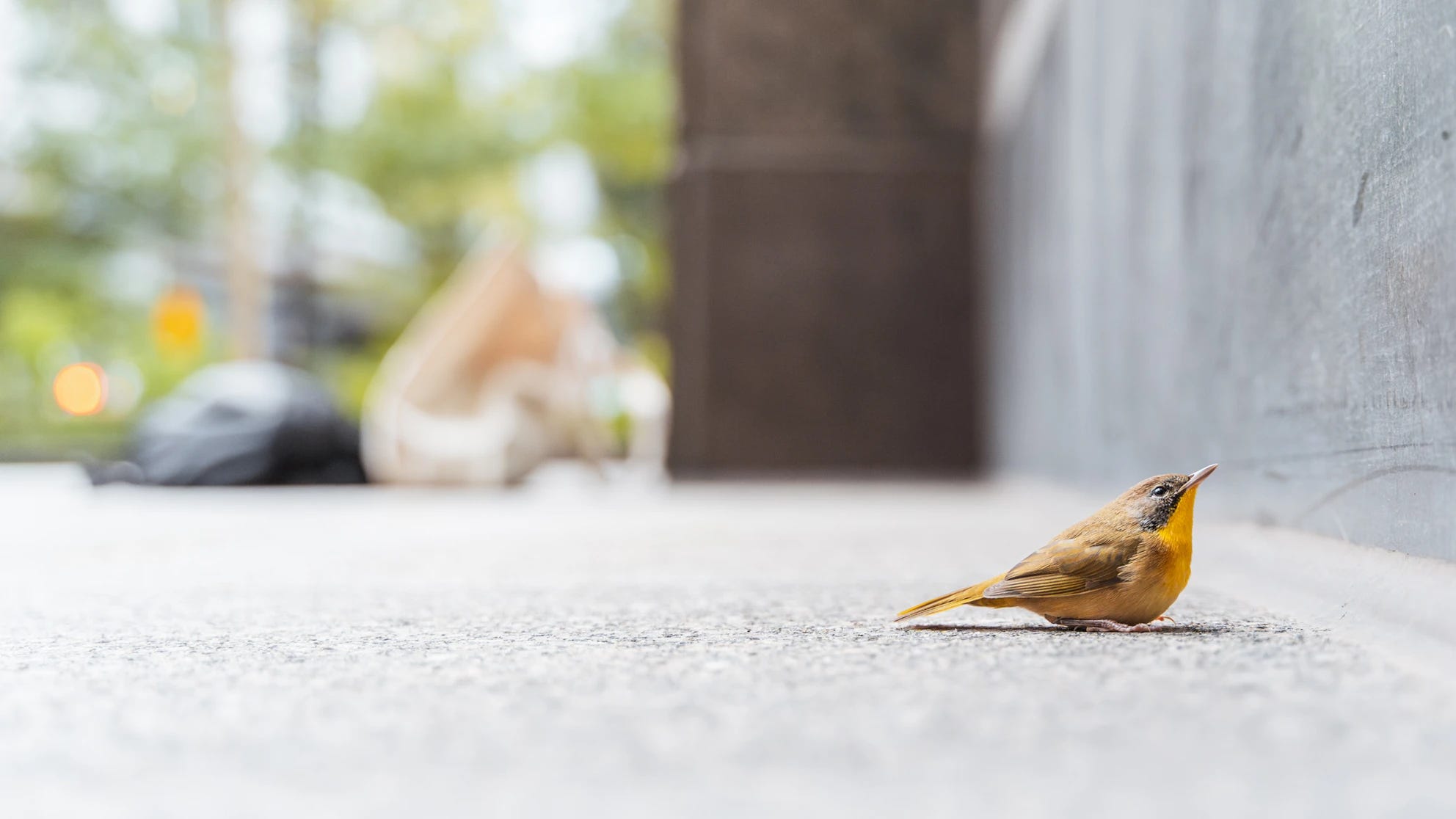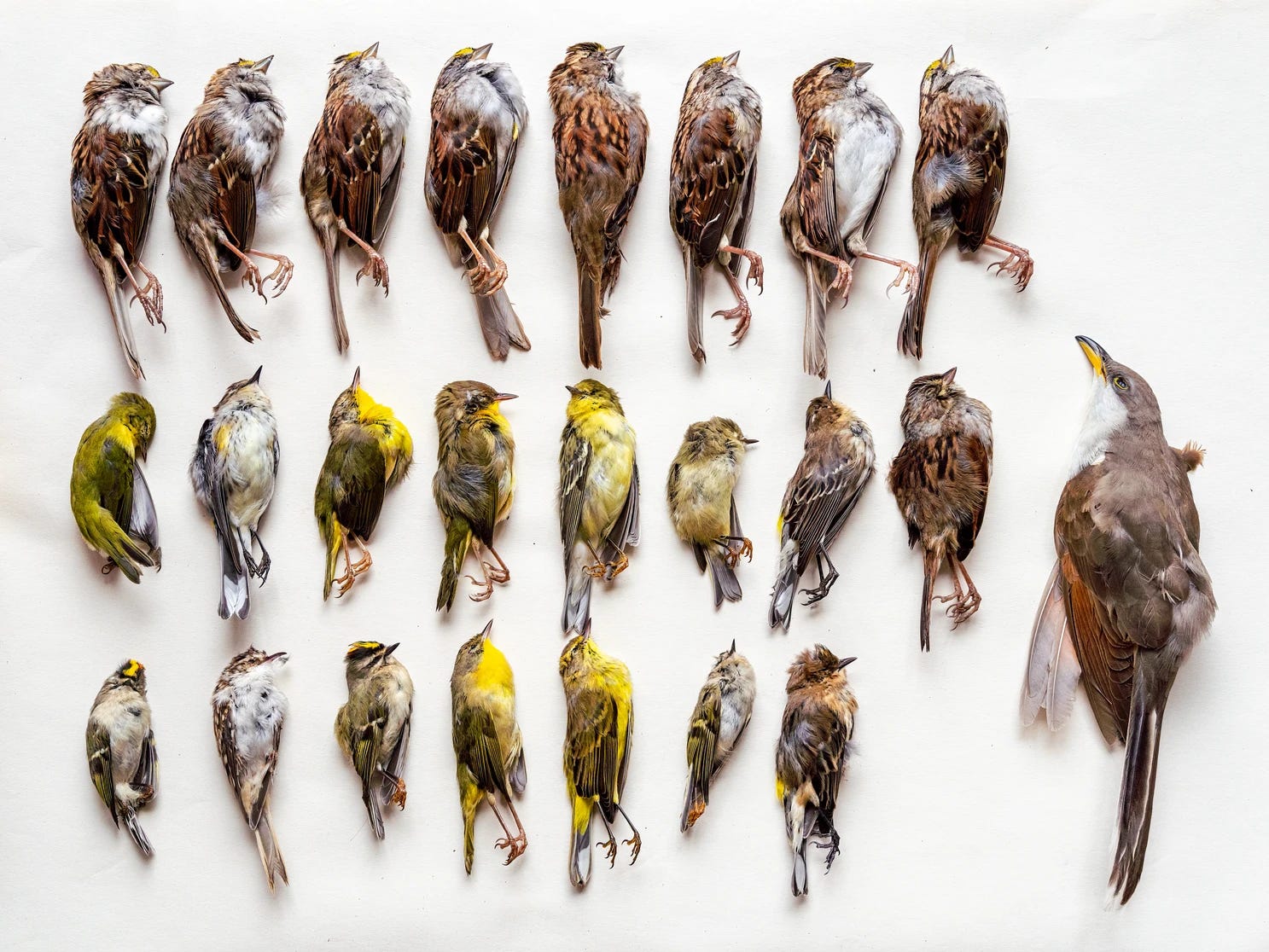URGENT: How NYC's 'bird people' save wildlife
“That did mean getting bitten, but I was wearing good gloves and a heavy coat.”
This is a guest essay by Dana Burns. Pinch of Dirt is a free newsletter, but it’s thanks to paid subscribers that I was able to commission a handful of writers to share their unique and inspiring nature and outdoor adventure stories this year.
Many of the email subjects start with ‘Urgent,’ and for good reason. Most of the birds that come through the NYC Audubon’s transportation and rescue listserv are in rough condition. But this one was really bad.
“This may be the sickest bird I’ve ever seen,” emailed the volunteer, a high school student known to run rescues on his lunch breaks. I clicked on the attached photo: a pigeon with a gash down its crop, exposing a gruesome pile of viscera. A by-passer had scooped him up into a box, stuck him in her bathtub, and reached out to Audubon for further instruction.

I volunteered to ferry the bird to the Wild Bird Fund, a nonprofit wildlife hospital in the Upper West Side. When I met the rescuer on the corner in Kensington, Brooklyn, she was flanked by two elementary-aged children, a big box in her hands. She looked overwhelmed. “Is he still alive?” I asked; it seemed possible that he didn’t survive the 20 minutes it took me to drive over. She peeked through one of the air holes and confirmed he was still kicking, or at least standing upright.
New York City can be hard on its countless full-time and migratory birds. Situated in the Atlantic Flyway, a major migratory path in the spring and fall, New York’s green spaces like Central, Prospect, and even Bryant parks are important refuges for nourishment and rest. In some ways, the human infrastructure helps, providing shelter and food, but more often than not the confrontation between the city and its wildlife is tragic. Unnecessarily so, since the majority of fatal hazards are human-made, and could be prevented with little change to our way of life: Rodenticide works its way up the food chain, affecting those who prey on rats. Birds find their wings tangled in glue traps and netting put out by incautious landlords. Poachers hunt feral pigeons and sell them to butchers and shooting ranges.
But the biggest hazard by far is window collisions, which are responsible for millions of deaths a year. Although making glass bird-safe is now mandated for new construction, the majority of Manhattan’s buildings remain uncorrected.

NYC Audubon is not the only organization working on the side of the city’s birds. Rather, they’re part of a broader, interlocking milieu of rescuers and advocates, a group whom I will inelegantly term ‘bird people.’ Many such ‘bird people’ are independent: a Brooklyn woman named Amina, for example, performs DIY veterinary medicine on everything from quails to parakeets, although her main focus is pigeons. Her case is far from unusual, as there are few professionals who will provide medical care to wildlife. Well-intentioned non-professionals cobble together folk remedies from chicken keepers, pigeon flyers, and other domains of animal husbandry. Rita McMahon, founder of the Wild Bird Fund, performed self-taught rehabilitation in her apartment before WBF opened its first brick and mortar location in 2012.
For McMahon, myself, and many others, finding your way into the bird person milieu is a matter of chance: you’re going about your business when you notice a bird is hurt, and suddenly you realize there is no separate natural sphere, which works itself out according to its own logic. You’re faced with suffering, and you feel a moral obligation to intervene. But how exactly to intervene is another issue. Amina, for example, uses her social media platform to share medical tips and detailed accounts of her rehabilitations so that people can perform rescues themselves.
Not everyone has the time or the stomach to become an amateur veterinarian. This is the beauty of the NYC Audubon transport listserv, which pulls calls from various bird rescue forums in search of volunteers who can ferry a bird to WBF. Moderators organize the influx into succinct calls; a subject line might read: ‘Urgent: Contained pigeon in Kensington, Brooklyn,’ with an attached photo and contact information for the person who found the bird. Or, perhaps, ‘Semi-contained, possibly injured Gull on Restaurant Patio.’ Volunteers report back their success through the listserv, and as needed, moderators close the case. Virtually nothing slips through the cracks.
The listserv proves that rescue infrastructures don’t need to be elaborate. In fact, it works because it replicates the logic of a chain of transmission: not inherently linear, but organized into cause and effect. It delimits the enormity of an enormous problem—the human toll on nonhuman life—into a manageable progression that can be worked into someone’s every day. There is a real pleasure in it, too: the transmissions passing through my inbox are communitarian, more focused and meaningful than platform sociality. They churn out reminders that reinforce a personally-held ethic, like an email church to the nonhuman.
On a cold day in February, the high school student volunteered to fetch a seagull who had been languishing on a restaurant patio. He seemed hungry, tired, and disoriented. One of the moderators was anxious about how he would catch the bird. “Gulls can be feisty,” she warned. But before long the victory was reported, a harrowing process involving a broom and a cardboard box.
“That did mean getting bitten,” he conceded, “but I was wearing good gloves and a heavy coat.”
Dana Burns is a PhD student at the CUNY Graduate Center, where she studies the lives of animals in literature and beyond.



Wildlife heroes, yay and thank goodness for the bird people taking time to take care of these birds! 🙏
So distressing to know every bird that we see dead probably has a family maybe even chicks that will starve without their mother. Timberdoodles a.k.a. American Woodcocks are dying because they fly low and they can’t see well as their eyes are on the sides of their heads…when they get into the city they crash into buildings in huge numbers. I saw one fly over the west side highway and crash into a dumpster. Unfortunately, it was behind a locked fence and I couldn’t get to it nor could I find anyone to help me get in and try to help it if it wasn’t already dead. Ugh!!!